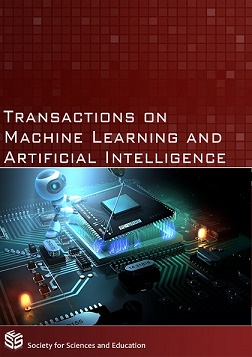Optimization of Biogas Electrical Power Generation using Neuro-Fuzzy Controller
DOI:
https://doi.org/10.14738/tmlai.76.7239Keywords:
Biogas power generation, MATLAB/SIMULINK, Neuro-fuzzy controller, Renewable energyAbstract
Biogas electrical power generation is a renewable energy which originated from biological materials. The technology design and model power system that predict and control the generation of biogas Electrical production. This research paper develops a Neuro-fuzzy controller model for generation of Biogas power production. A Neuro-fuzzy controller is design to the Biogas power system in order to improve the power quality delivery to the load. The set of 27 rules are written for proper training of biogas electrical data in the neural network. The training is used to control signal of the Biogas Power output of the system. The output of Neural Network unit is given as input to the de-fuzzification unit and the linguistic variables are converted back into the crisp form. Therefore the algorithm was designed to decide power supply to the load as to improve the performance of the biogas system using MATLAB/SIMULINK and Neuro-fuzzy model was developed for easy input of the data. The result shows that biogas electrical power output increased by 4.39kw, which is 54.8% increase when Neuro-fuzzy controller is incorporated. The improvement in the system is due to the training of input parameters of the biogas generated. The result obtained shows that there is Real Power improvement in Biogas system when Neuro-fuzzy is incorporated in the system model
References
(2) Araoye Timothy Oluwaseun, C.A. Mgbachi, Ganiyu Adedayo Ajenikoko(2018). Development of a fuzzy logic technique for biogas generation of electrical energy: international journal of Advanced Scientific and Technical Research.
(3) Cai YP, Huang GH, Tan Q, Yang ZF (2009). Planning of community-scale renewable energy Management systems in a mixed stochastic and fuzzy environment. Renewable Energy 2009; 34(7):1833–47.
(4) Ezeonu FC (2002), Nigerian journal of Energy.PP 53 – 57.
(5) Fleten S.E, Maribu K.M, WangensteenI(2007). Optimal investment strategies in decentralized
renewable power generation under uncertainty. Energy 2007; 32(5):803–15.
(6) Hiremath RB, Shikha S, RavindranathNH(2007). Decentralized energy planning; modeling and application—a review. Renewable and Sustainable Energy Reviews 2007;11(5):729–52.
(7) Jang, JSR. ANFIS: Adaptive network based fuzzy inference system. IEEE Transactions on systems, Man, and, Cybernetics 1993. 23(3): 665-685 <https://doi.org/10.1109/21.256541>
(8) Kowalski K, Stagl S, Madlener R, OmannI(2009). Sustainable energy futures: methodological
challenges in combining scenarios and participatory multi-criteria analysis. European Journal of Operational Research 2009; 197(3):1063–74.
(9) Laouafi A, Mordjaoui M, Dib D. One-Hour Ahead Electric Load Forecasting Using Neuro-fuzzy System in a Parallel Approach. In: Azar AT, Vaidyanathan S, editors. Computational Intelligence
(10) Mahin, D.B. (1982) Biogas in Developing Countries. Bioenergy System Report to USAID,
Washington, DC.
(11) Ofoefule, Akuzuo U et al (2010)Adv. Appl. Sci. Res.,1 (3):98-105
(12) Sumathi S, Surekha P. Computational intelligence paradigms theory and applications using MATLAB.
(13) Taylor and Francis Group, LLC, 2010. Applications in Modeling and Control, Cham, Switzerland: Springer International Publishing, 2015. pp. 95-121.
(14) WahiduzzamanSajib, Mehadi Hassan, NajmulHoque, Mourshed M(2018)..”Electricity
Generation from Poultry Waste in Bangladesh” January 2018.
(15) Yokoyama R, Wakui T, SatakeR(2009). Prediction of energy demands using neural network with model identification by global optimization. Energy Conversion and Management 2009;50:319–27.






